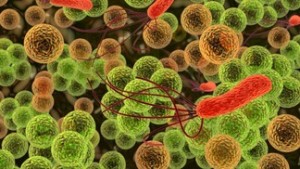Aug 6 2013
A nano-machine cell killer: EPFL researchers decipher the attack strategy of certain bacteria, including the infamous Staphylococcus aureus.
 © photos.com
© photos.com
This is a veritable mechanics of aggression on the nanoscale. Certain bacteria, including Staphylococcus aureus, have the ability to deploy tiny darts. This biological weapon kills the host cell by piercing the membrane. Researchers at EPFL have dismantled, piece by piece, this intriguing little machine and found an assembly of proteins that, in unfolding at the right time, takes the form of a spur. Published in "Nature Chemical Biology", this discovery offers new insight into the fight against pathogens that are increasingly resistant to antibiotics.
To attack the host cell, the weapon must first attach. On the surface of the aggressor is a mechanism composed of seven proteins that are folded over and assembled into a ring. The researchers were able to show how, in time, these long molecules unfold to form a kind of spur.
The trigger is just another part of the machine – a peptide, or a small organic molecule. When exposed to the enzymes of the host organism, it detaches. The balance of the assembly adjusts: the proteins adopt a new form, spreading out in a circular motion to form a spur, which then pierces the membrane of the host cell.
Mechanical at the molecular level
No chemical reaction is involved in these biological weapons. This is a mechanical phenomenon, albeit on the molecular level. Matteo Dal Peraro, co-author of this study, also uses the term “nanomachine” to refer to this tool of aggression.
The EPFL researchers have worked on strains of Aeromonas hydrophila – a bacterium well-known among travelers for the intestinal disorders it causes. In Petri dishes the researchers could, at will, cause the formation of these darts, thereby exposing microorganisms to digestive enzymes. They were able to model precisely how each protein dynamically rearranges, once the peptide is missing, to form the spur.
Hinder the attack mechanism
For co-author Gisou Van der Goot, this discovery opens new therapeutic perspectives, for example in cases of nosocomial infection staphylococci. “We could imagine catheters coated with substitute peptides,” she says. “They could prevent the formation of the ring and, thus, the spur. We would avoid many hospital infections.”
The concept is to address the weaponry of the bacteria rather than the bacteria itself. This is particularly attractive at a time when multiple antibiotic resistances are becoming increasingly common. “This approach would have the advantage of not causing mutations, and thereby resistance, in pathogenic bacteria,” says the researcher.
Source: http://actu.epfl.ch/